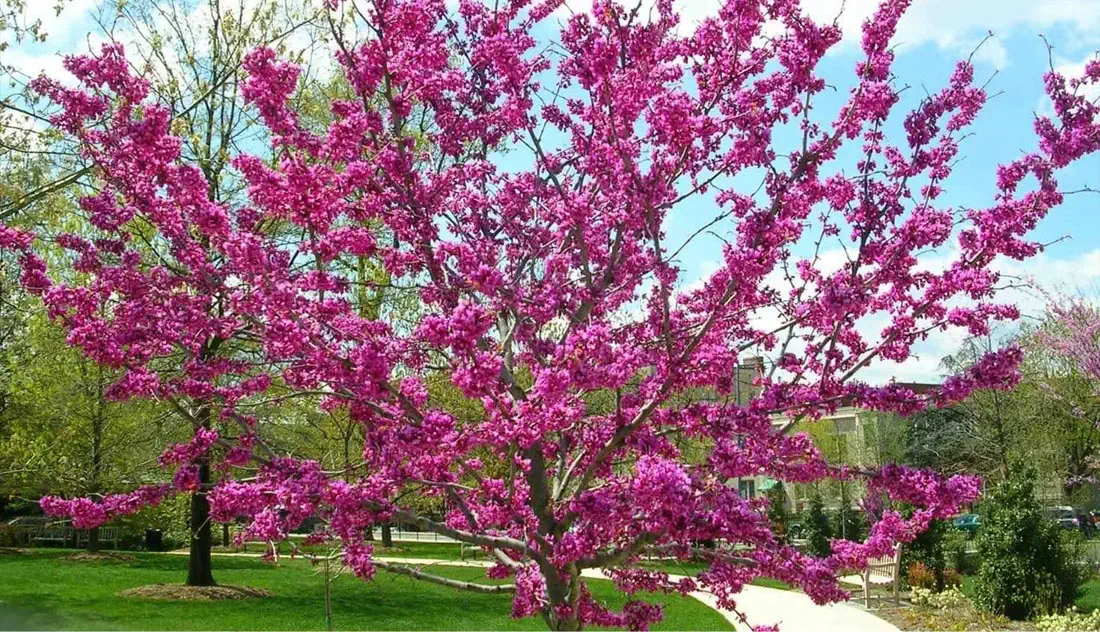
The Eastern Redbud
HOW THE EASTERN REDBUD BECAME THE OKLAHOMA STATE TREE
Oklahoma has a colorful history when it comes to selecting state symbols and the state tree is no different. The Oklahoma Redbud War of the 1930s began when Oklahoma City resident Marmie Lee Brown wrote a letter to the governor suggesting that the Eastern Redbud become the official state tree. The governor was about to make it official when he received a telegram from Tulsa resident Roberta Lawson, president of the Federated Women’s Club, suggesting that the redbud was the tree Judas Iscariot used to hang himself after betraying Christ. The suggestion that the redbud was, in fact, the “Judas Tree” of the Bible set off a national firestorm with stories appearing in newspapers and magazines around the country including Time and Newsweek. The issue was quite controversial for the governor but was eventually resolved when church hierarchy declared that the Bible never mentioned a redbud. As a result, the Eastern Redbud became the Oklahoma state tree in 1937.
Whether you refer to the state tree as the Eastern Redbud or a Judas tree, there is no denying its beauty. In fact, there are various Redbud Festivals held each year, including ones in Denton, Texas, Honaker, Virginia, and Columbus, Wisconsin.
EASTERN REDBUD SCIENTIFIC NAME - CERCIS CANADENSIS
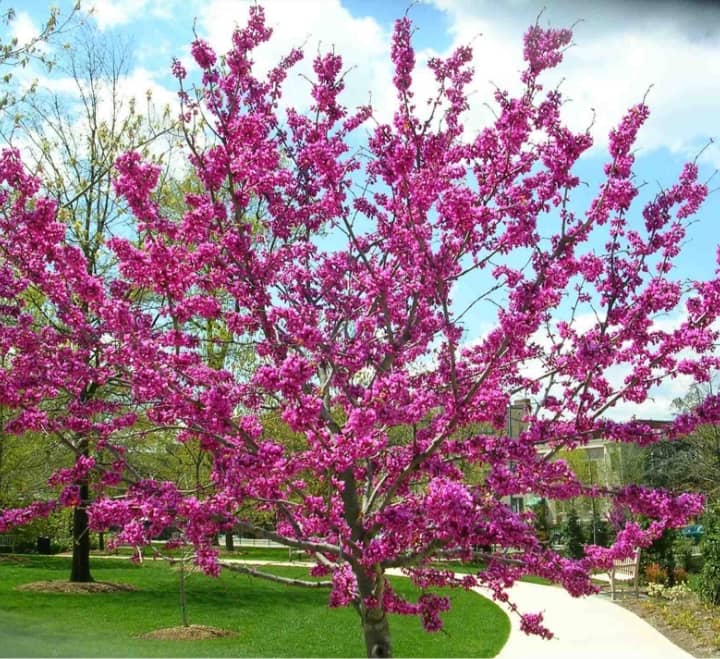
The Eastern Redbud is the state tree of Oklahoma, the Sooner State.
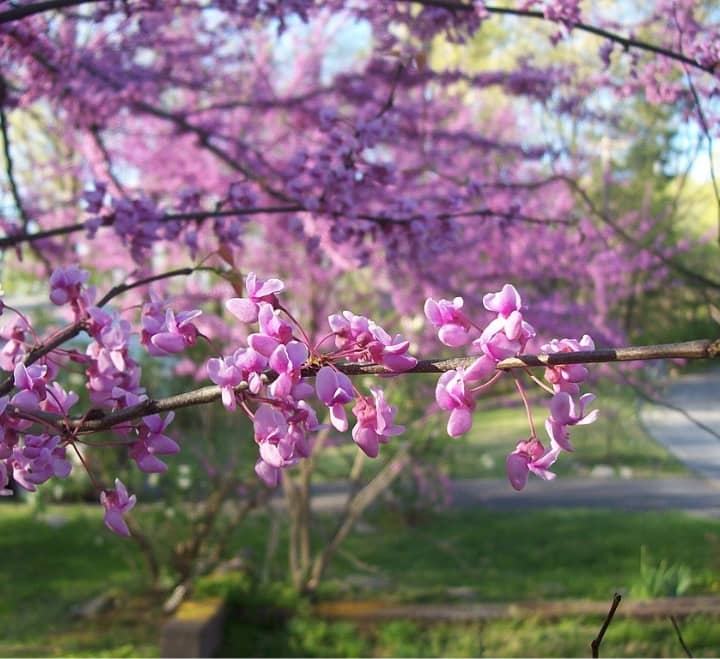
Photo from Hoodedwarbler12, Wikimedia Commons
EASTERN REDBUD CHARACTERISTICS
The Eastern Redbud is a deciduous tree (tree that sheds leaves seasonally) and is native to North America. It is often multi-trunked with a rounded crown and is extensively planted throughout Oklahoma.
-
Scientific Name: Cercis canadensis
-
Common Name: Eastern Redbud
-
Also Known As: Judas tree
-
Native range: New Jersey to Northern Florida, West to Missouri and Texas
-
Height: Up to 20 feet
-
Leaves: 3 to 5 inches tall and wide
-
The tree has heavy, hard, and close-grained wood and its heart-shaped blooms are reddish-pink in color, though the blooms can also be white.
-
The buds emerge from the bark of the twigs and branches and adorn the entire tree with clusters of flowers.
-
The flowers appear before the leaves creating a striking appearance in early spring painting the landscape of the Sooner State pink.
-
After flowering, flat bean-like pods resembling snow peas appear.
-
In the fall, foliage colors include reddish-purple, orange and yellow.
-
The tree is highly valued as an ornamental tree and grows to approximately 12-18 feet high, though it can reach heights as tall as 30 feet.
-
They work well as understory trees and are stunning when planted in groups.
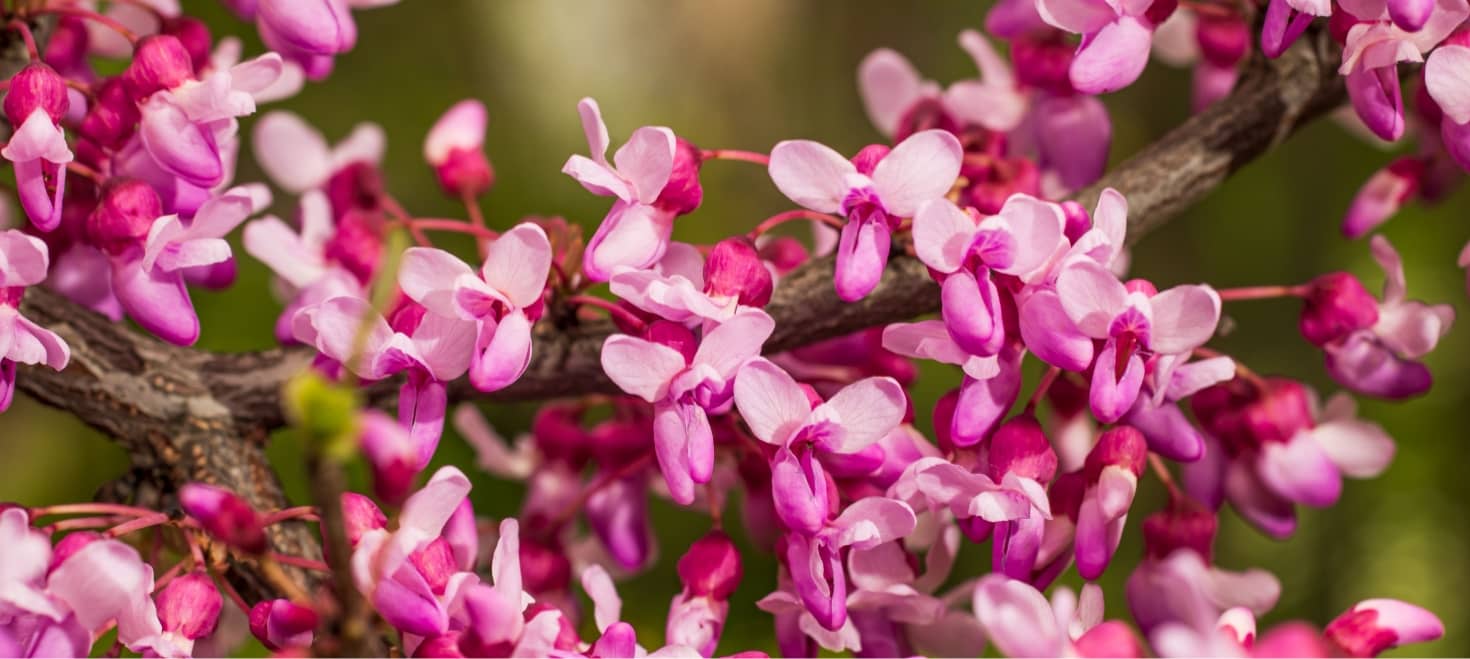
Clusters of flowers emerge from the entire tree, including the trunk and branches of an Eastern Redbud.
CARING FOR AN EASTERN REDBUD
The redbud is quite adaptable and requires minimal care. Mulch can be placed around the trunk of the tree, but should not touch the trunk to help retain moisture. Redbuds do well in most soil types but do require adequate drainage. They should receive partial shade, though they will produce more blossoms when exposed to full sun. Redbuds are susceptible to canker and borers, so regular tree maintenance, including annual inspection by an ISA Certified Arborist, is recommended.
Pruning and Trimming an Eastern Redbud Tree
Keeping the Eastern Redbud trimmed and pruned is very important. Proper pruning and trimming will increase the life of the tree, help it to flower in the spring, and reduce broken or damaged limbs. Follow these guidelines for trimming your Eastern Redbud trees.
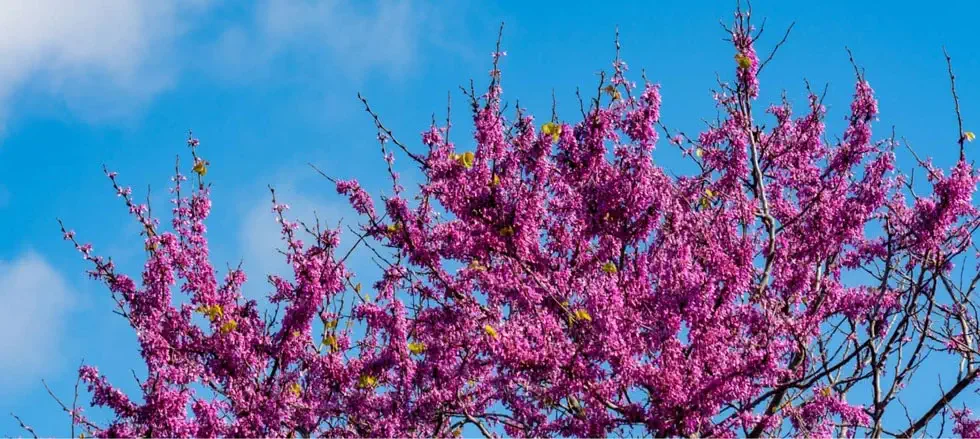
Clusters of flowers emerge from the entire tree, including the trunk and branches of an Eastern Redbud.
Eastern Redbud – When, why and how to remove them
As beautiful and easy to maintain as the glorious Eastern Redbud is, there are times when it’s necessary to remove them from your property. Tree maintenance for the Eastern Redbud can include a variety of things, including trimming, pruning, cabling, and plant health care but occasionally full on removal of the tree might be needed. Such examples of a time where it’s perhaps time to remove the tree are as follows :
Overgrown/overburdened
When the tree itself has become too large for the space it occupies. The large deep roots can make the ground beneath uneven and occasionally dangerous to walk on. Thick Eastern Redbud roots can grow so large and strong that they’ve be occasionally known to offset concrete or paving slabs on the surface above. This makes traversal and the overall aesthetic in your garden less than ideal. Less intrusion but equally unsuitable is when the tree branches and/or height have gotten out of hand. This may block much needed sunlight to smaller bushes or plants in your garden or worse yet, become a serious dangerous weapon against your property in the case of storms and high wind conditions.
Diseased
If your Eastern Redbud becomes diseases then there is very little you can do to treat it to stave of death. Eastern Redbuds can fall victim to bacterial and fungal diseases such as verticillium wilt. Early signs of this may be discoloration of the branches or bark and random patches of leaves turning yellow or brown in contrast to the rest of the tree. A diseased tree is weakened and poses the same threats as a dead or dying tree to your property. It’s also possible that the disease may spread to other plants in your garden and removal of the tree is necessary to stave of the spread of infection.
Dead or dying tree
If the tree itself has started to die, then it may be time to remove it. The drying out of the roots and main tree itself can lead to discoloration and evening hollowing of the branches. The longer a dying tree is left untreated, the more chance of the branches becoming brittle and more susceptible to weather conditions. Again, this is not pleasing to the eye but moreover can become a flying object hazard during stormy weather which may lead to damage of your property or possible harm or injury to loved ones.
Positional Safety Hazard
It’s not always possible to control the height, direction or angle of growth of your Eastern Redbud. Trimming, pruning, cabling all help especially early in the tree’s life cycle however the older the tree gets, the more unruly the growth. Your redbud may end up growing at an awkward angle that may pose a threat to your property or at the very least, cause concern with falling branches. Cutting back branches that overhang areas you don’t want your tree to encroach can help but if your Eastern Redbud becomes overgrown and unruly then full removal may be the only option left.
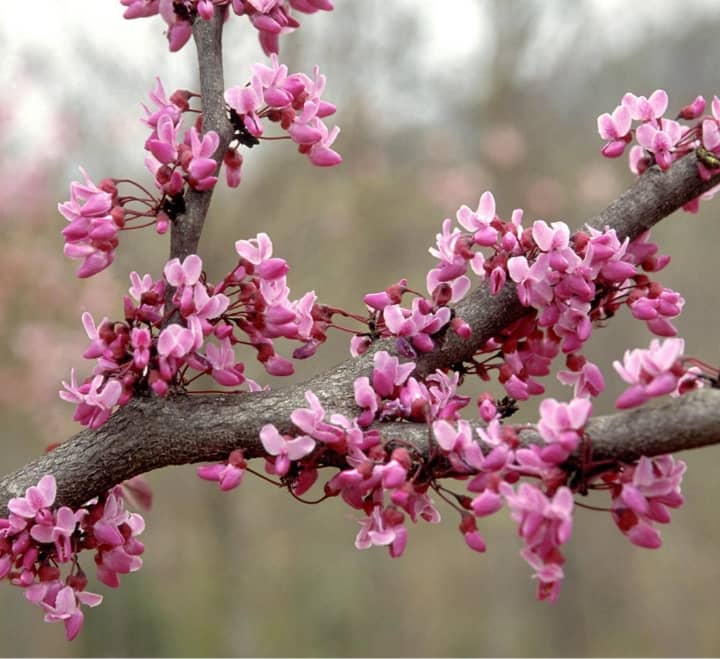
If you need to remove the Eastern Redbud it’s always best to leave it to the professionals. Trimming and cutting branches in a safe way is sometimes a tricky process. Add the that the elements of height and risk and it’s not a project you should consider tackling without previous experience. Professionals will ensure to use the correct tools to cut your tree back safely and leave nothing overlooked. Stumps need to be treated to kill the roots before removal and great care is needed to complete tree removal successfully.
Free estimates are available and taking the hassle out of removal while providing a professional service is paramount. Check out our recommendation for tree removals.
Frequently Asked Questions
How tall do eastern redbud trees grow?
At maturity, the eastern redbud reaches a height of about 20 to 30 feet. This tree grows at a moderate rate, increasing in height by 13 to around 24 inches every year.
How big do eastern redbud trees get?
At maturity, the eastern redbud has a spread of 25 to 35 feet at maturity.
When to plant eastern redbud?
The best time to plant any tree, depending on your location, is generally in the spring or early fall. However, in warm regions, a tree can be planted in the winter. For the eastern redbud, early spring is the best time to plant.
When do eastern redbud trees bloom?
The eastern redbud is often one of the first trees to bloom in the spring. Flowering occurs between March and May. After flowering, the leaves continue to grow and gradually turn dark green.
Contact Your
Tulsa Tree Service
TREES BY JAKE has been providing tree removal services in Tulsa for over a decade. Jake is a Tulsa Certified Arborist and we have a variety of equipment to safely and efficiently remove trees. Call or text us today for your free estimate at 918-500-9955 and don’t forget to check us out on Facebook, Instagram, and Twitter!
